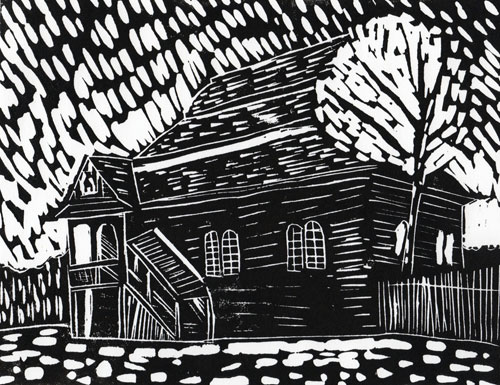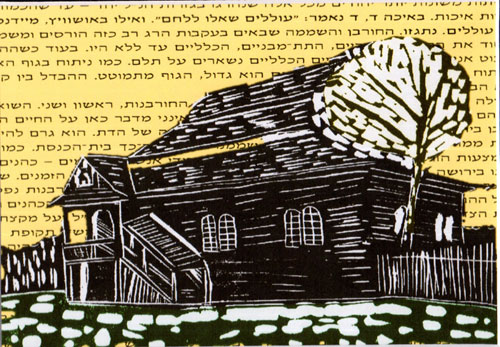Lost Treasures: The Wooden Synagogues of Eastern Europe The Artwork of Bill Farran
Lipsko, Poland - Original Linocut
Lipsko, Poland - Original Linocut
Yiddish name: Lipsk
The town of Lipsko belonged to the Krepski, Deenhoff, Sanguszek and Kochanowski Polish families. In 1662, 497 Christians and 22 Jews paid a poll tax. The existence of a small Jewish settlement was registered in 1765 and a wooden synagogue was built the same year.
Since the reign of King Stanislaw August, who was the last King of the Polish-Lithuanian Commonwealth, the town was allowed to organize ten fairs and a weekly market on Sunday. The local population derived its income from agriculture, and the sale and distillation of alcohol. Following the final partition of Poland, the town stagnated, with the population diminishing to less than one hundred people.
In 1868, as a punishment for participation of residents in the January Uprising, the Russians took away Lipsko's town rights, turning it into a village. This prohibited townspeople from holding fairs, which decreased everyone’s income. During World War II, the German occupiers committed mass murders; among them was the event on September 8, 1939, when they burned alive sixty local Jews in the synagogue.
Purchase a print
Original linocut prints are 8x10 inches, and are available either unmatted or in an 11x14 matte.
I also offer matted 5x7 digital prints. These prints are created from high-res digital images and come in an 8x10 matte.
For this synagogue I have created an additional digital print, with Hebrew lettering in the background. These prints are also created from high-res digital images and come in an 8x10 matte.



